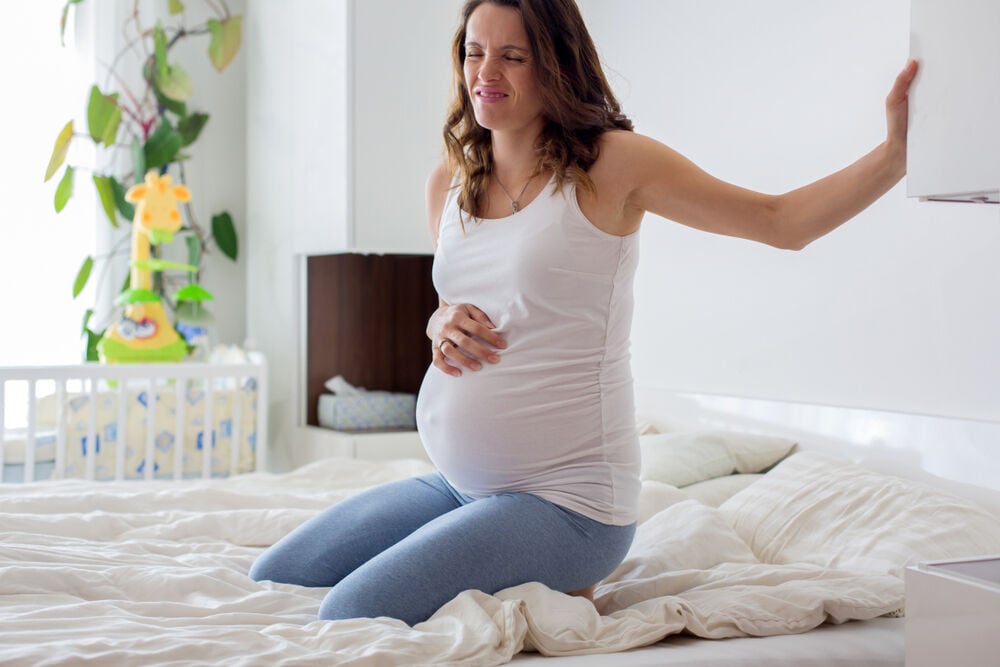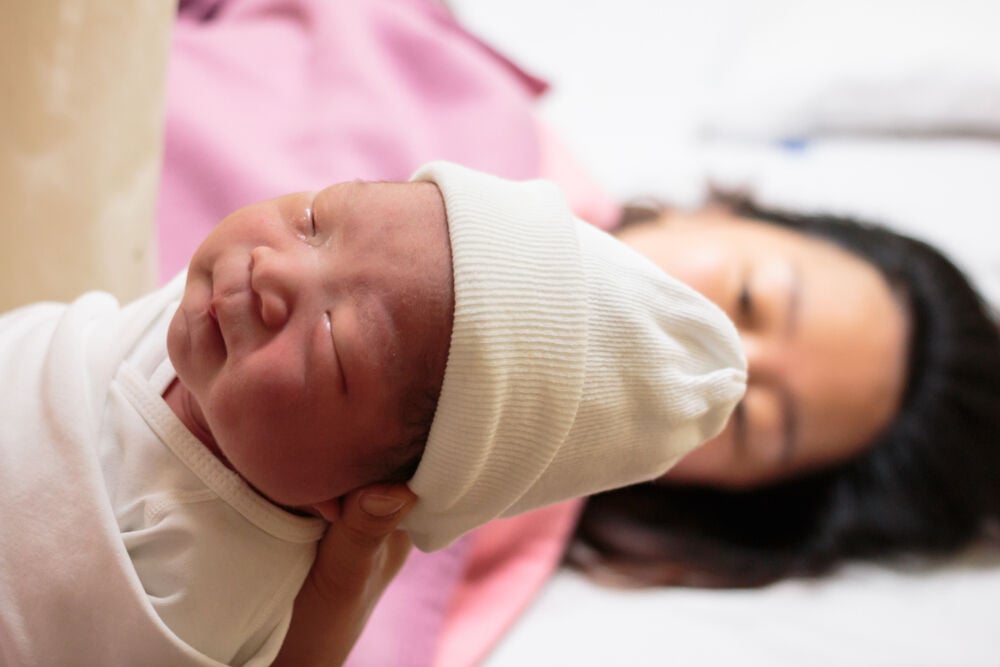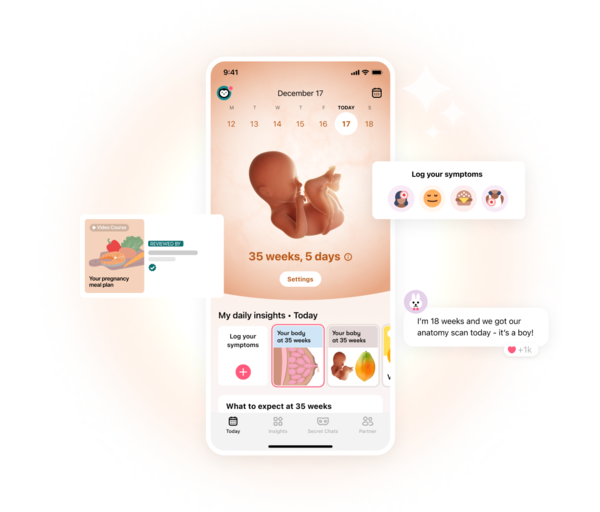Anywhere from week 28 of pregnancy going forward, women start questioning whether the contractions they are feeling are normal. Lower abdomen pains during the first trimester are normal, but you should still know how to tell the difference between real and false contractions.
-
Tracking cycle
-
Getting pregnant
-
Pregnancy
-
Help Center
-
Flo for Partners
-
Anonymous Mode
-
Flo app reviews
-
Flo Premium New
-
Secret Chats New
-
Symptom Checker New
-
Your cycle
-
Health 360°
-
Getting pregnant
-
Pregnancy
-
Being a mom
-
LGBTQ+
-
Quizzes
-
Ovulation calculator
-
hCG calculator
-
Pregnancy test calculator
-
Menstrual cycle calculator
-
Period calculator
-
Implantation calculator
-
Pregnancy weeks to months calculator
-
Pregnancy due date calculator
-
IVF and FET due date calculator
-
Due date calculator by ultrasound
-
Medical Affairs
-
Science & Research
-
Pass It On Project New
-
Privacy Portal
-
Press Center
-
Flo Accuracy
-
Careers
-
Contact Us
What's the Difference Between Braxton Hicks and Real Contractions?

Every piece of content at Flo Health adheres to the highest editorial standards for language, style, and medical accuracy. To learn what we do to deliver the best health and lifestyle insights to you, check out our content review principles.
What are Braxton Hicks contractions?
Braxton Hicks contractions, also known as false contractions, are the sensations your uterus produces in order to prepare for the labor. Your doctor will most likely inform you of Braxton Hicks and let you know to not concern over it.
Still, women who are at risk of premature labor, and women with other health risk factors affecting the pregnancy often worry about being unable to distinguish real contractions from Braxton Hicks.
You can picture Braxton Hicks contractions as a way for your uterus to get in shape, to exercise, in order to prepare for childbirth.
Unlike real contractions, Braxton Hicks are weaker and last up to 30 seconds.
Typically, Braxton Hicks are the localized contractions of the sides of the uterus, rather than the front. However, as the belly already feels tight, it might be hard for you to distinguish whether your belly is tightening from the top downwards, or only on the sides.
Take a quiz
Find out what you can do with our Health Assistant
Braxton Hicks contractions can be repetitive but are not rhythmic, they do not get stronger. They appear randomly, or sporadically.
Most women get used to having Braxton Hicks in certain times of the day or in certain situations. For most women, the false contractions intensify when they're more active or get tired. Long sitting can also intensify Braxton Hicks, and they're frequent in late evenings.
Since every woman has a different level of sensitivity to contractions and other sensations that occur inside the belly (gas, bloating, under-rib pains and stretching), Braxton Hicks will feel differently.
In general, you'll feel false contractions as a type of painless, numb pressure in your upper abdomen. If you're sensitive enough to distinguish that the cramping is happening at the sides of the uterus, good for you! If not, don't get alarmed. There are still plenty of ways and strategies for you to distinguish false from real contractions.

What are real labor contractions?
A real contraction, on its own, happens when a uterus cramps from its top, creating a pressure on the cervix.
This causes the cervix to shorten and then, and eventually start to dilate. When it comes to a timely, full-term labor, most women prefer for the process to go as fast as possible.
However, if there's a risk from premature labor, you should learn more about real contraction to be able to recognize them. Here are some of the real contraction characteristics:
Pain
Real contractions are painful, but the intensity of pain varies among women.
Low-pelvic pressure
False contractions normally don't cause the pressuring feeling in the low abdomen and pelvic area. However, if you start feeling like there's something pressuring your pelvis from the inside out, it's possible that the contractions are real.
Rhythmic repetition
More frequent than 5 or 6 per hour. Real contractions most often repeat every 9-11 minutes and get progressively closer (every 8 and five minutes) with time.
Effect on the cervix
Real labor contractions do have an effect on the cervix opening.
Bleeding/other labor symptoms
If the contractions are accompanied by other labor symptoms, you can consider them to be real.
Persistence
Real contractions persist as the time passes, regardless if you change positions or rest. If your contractions persist regardless of rest, it’s time to grab your newborn essentials and head to the hospital!
How can I tell the difference between true and false labor?
There are a couple of ways to track your contractions and distinguish real from false. Here are a couple of guidelines:
Timing
Are contractions regular and repetitive? Braxton Hicks contractions are random, and you won't notice them repeating after 20 or 15 minutes. However, if the real contractions start, they will most certainly repeat every 15-20 minutes.
Consistency
False contractions will stop if you lie down and get some rest, most often after 20-30 minutes. They will also ease if you empty your bladder and drink some water. Real contractions will progress even if you get some rest.

Low abdomen pain
Real contractions are followed with low abdomen pains, which vary from light, period-like cramping, to severe pain. Braxton Hicks can cause discomfort, especially if you're already feeling pains under your ribs or in your back (which is normal during pregnancy).
Lower back pain
Some women experience sharp, lower back pain during real contractions. If you already suffer from lower back pain, the contraction pains will be distinguishable as they'll feel sharper and more intense.
Duration
Braxton Hicks mainly last shorter than 30 seconds, while real contraction pains extend to 60 seconds or longer. The same goes for the pain sensation, regardless of the pain intensity.
Contraction course
With different levels of sensitivity to pain, and particularly with other typical pregnancy aches, you might be unable to distinguish the real contraction experience. In general, a real contraction will feel like a constant, lasting (60 seconds or longer) pain or pressure that starts either in your lower back (you might not feel this pain) and extend to your abdomen, resulting in low abdomen (pelvic) pressure. Unlike this, a false contraction will be a localized cramping in your upper abdomen lasting anywhere from a couple to 30 seconds.
When should I call my doctor, doula, birth partner?
If you're full term, your Braxton Hicks will become more frequent and intense. Still, there are a couple of guidelines for distinguishing real contractions from Braxton Hicks.
Although these guidelines are general, every doctor practices their own protocols and tailors them to every individual pregnancy.
For example, if your pregnancy was regular and with no risk factors from the start, your doctor will instruct you differently than if it was a high-risk pregnancy.
Here's when you should grab your hospital bag and go to the doctor:
- Contractions are rhythmic and repeat every 15 minutes.
One of the base differences between real and Braxton Hicks contractions is the pace in which contractions re-occur. Braxton Hicks is random, which means that you can have 2-3 contractions one hour, and then none at all for the rest of the day.
In the case of real contractions, the cramping doesn't stop after 2-3 hours. Instead, it intensifies. If you feel like your contractions are becoming regular or more intense past 2 hours, make sure to get medical help.
- You feel contractions in your lower abdomen. Braxton Hicks is typical to the upper abdomen area (above your hips). Low abdomen contractions, however, are most likely real, especially if accompanied by sharp pain.
- Contractions are painful. Braxton Hicks contractions are rarely painful. When they happen, you'll most likely feel a low-intense pain in your back or upper abdomen. If the contractions you are feeling are painful and focused in your lower abdomen, there's a good chance they're real.
- Presence of other symptoms. Nausea, vomiting, increased temperature, and blood pressure – are all signs that you need some sort of medical help. Contractions accompanied with these symptoms don't always have to signal labor, but they do in most cases.
Summing up
If you're not yet to go into labor, and you fear to miss the initial signs of a premature labor, your concerns are even greater. On a humorous side, most women realize that the intensity of Braxton Hicks contractions is nowhere near the intensity of real contractions. Rest assured that you will be able to distinguish real from false contractions. If you’re still worried, don’t hesitate to give your midwife or doctor a call and ask any questions.


Hey, I'm Anique
I started using Flo app to track my period and ovulation because we wanted to have a baby.


The Flo app helped me learn about my body and spot ovulation signs during our conception journey.


I vividly
remember the day
that we switched
Flo into
Pregnancy Mode — it was
such a special
moment.
Real stories, real results
Learn how the Flo app became an amazing cheerleader for us on our conception journey.
References
History of updates
Current version (17 February 2022)
Published (27 December 2018)
In this article

Get your personal guide to pregnancy with the Flo app
-
Follow your baby's growth week by week
-
Get expert info on symptoms, safe foods, and more
-
Chat with other parents-to-be




